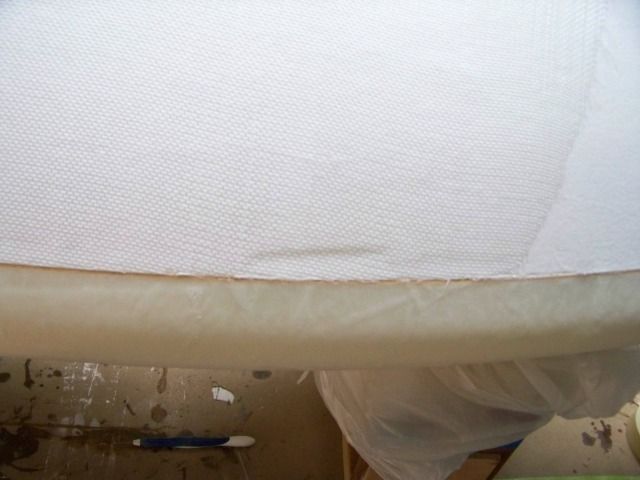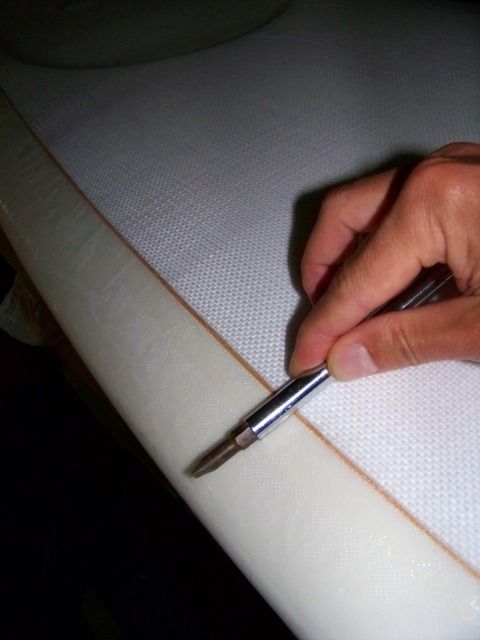Jeff-
Slashzilla and John are right on it. I also emphasize that using peel ply will get your lightest results, so light to the point that you can use more fabric than with an open lay up schedule and still come up lighter. Equate that with being stronger!
Here are 3 scenarios:
I have built sailplane wings using Mylar as the release sheet. Basically, you lay up from the “outside, in” directly onto the waxed/PVA coated 1/16" Mylar sheet, then flop the entire thing onto the awaiting UNSEALED wing blank. Other than the initial hand lay up, there is NO controlling the resin matrix, as the excess is driven inward, or a little bit out the edges. When finished, you end up with a shiny, “finished” wing. Mylar is good for 2-dimensional curves.
I built boat hulls using using a perforated release sheet, and as John has pointed out, the objective was to keep the resin matrix at a certain ratio. The resin matrix was “doped” with lightening agents like microspheres, microballoons, colloidal silica, etc. (a "witch’s brew of additives) and multiple layers of different density resins were used. We wanted to capture some of those resins rather than extract them. When you thicken a skin it gets stiffer, in fact, stiffness is a cubic factor of thickness (if you double skin thickness, it becomes “2-cubed” or EIGHT times stiffer.) Stiff skin means less dents and less skin buckles.
I made sailboards, kiteboards and surfboards using peel ply to reduce the weight and increase the strength. Conceptually you can build the lightest, strongest board possible using peel ply and vacuum bagging. The resins are extracted straight up through the cloth AND the entire layup is SMASHED down thin, the resin does not have to travel hardly any to be ejected from the lay up. Thinner means LESS STIFF skin, which means more dents/buckles etc. so more fabric is added. The “middle layers” just act as “bulk modifiers” to thicken the skin but keep density down. Enter products like cerex as that intermediate layer. (Think foam sandwich skin in fabric form, as Skinz is a low density fiber.) The outer layer serves two purposes, one structural to the entire board, the other for abrasion/environment resistance.
These 3 scenarios are the range for bagging. The last scenario is what I am hinting you should strive for when wanting to build the “ultimate” light weight strong surfboard but not inhibit overall “global” flex of the board. I’m just trying to imply that fabric choices are kinda important, also another thing not addressed is fiber orientation, but that would be a whole other thread!
I will be candid in asking this, “Are you resistant to using Peel Ply?” Don’t mean to put you on the spot, but saw you went and got batting, which is part of the equation. I think for ultimate conformity you will find Peel Ply to be quite good. I say this only because I have seen it and was stoked with the results…
Lastly, it is super important to seal the blank, even with open lay ups, with few exceptions actually. Further doing that double seal of spackle, sanding it to re-expose the round cells, then sealing with a thin film of epoxy will really help your results. More time doing it will bear this out. You’ve only done two sides and I see you are learning quickly, MUCH quicker than I did back in the mid-80’s!
Here is a pic of a complex shape, a Racing Kiteboard, using a very difficult material to conform, (coarse bi-directional carbon graphite.) I used peel ply and batting to get the job done:
[img_assist|nid=1067288|title=Vacuum Bagging|desc=|link=none|align=left|width=480|height=640]
[img_assist|nid=1067289|title=Racing Kiteboard using vacuum bagging techniques|desc=Biaxial coarse weave carbon graphite conforming over abrupt contours using vacuum bagging|link=none|align=left|width=640|height=480]
This is a good thread, very relavent, as I am working with a company which is working on methods and materials to achieve some of the things mentioned. Eventually some of the coming materials will benefit surfboard building.
George

 .
.







